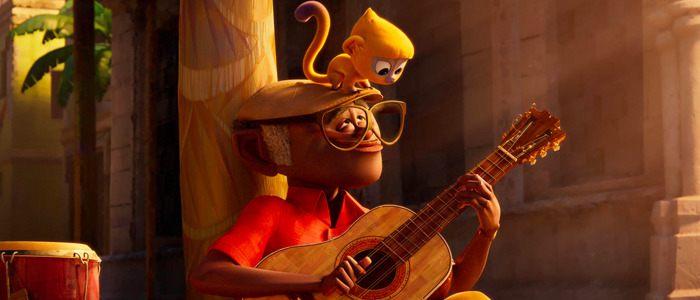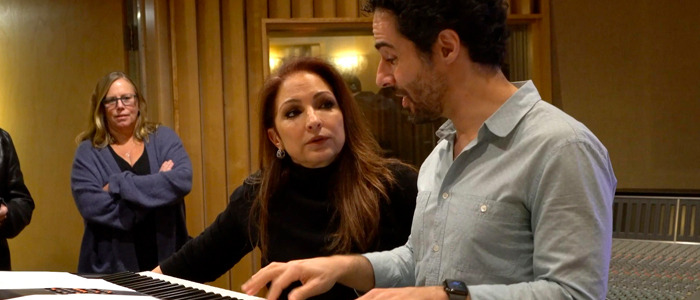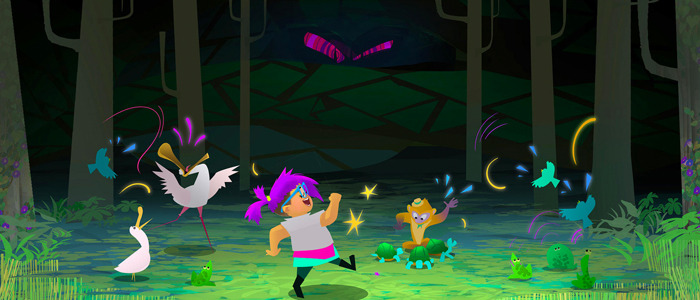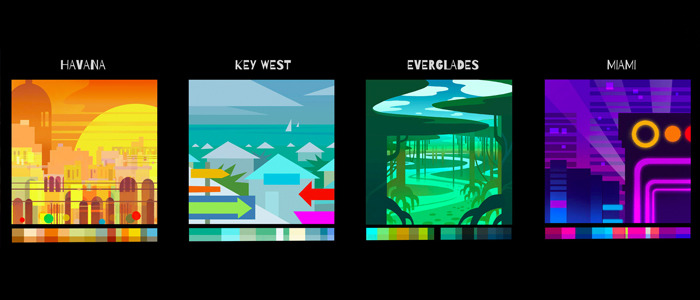'Vivo,' Sony's Animated Musical Starring Lin-Manuel Miranda, Is A Road Movie With A Big Heart And Ambitious Animation
2021 is shaping up to be a big year for Lin-Manuel Miranda.
The multi-talented actor and writer behind Hamilton played a small role in In the Heights, the film adaptation of his Tony Award-winning musical. He's making his feature directorial debut later this year with a movie adaptation of Tick, Tick...Boom!. And he also wrote the original songs for Encanto, a new Disney animated musical coming out in November. But next up is Vivo, a new animated musical from Sony Pictures Animation which features original songs from Miranda and marks the first time he lends his voice to the lead character of an animated film.
Here's everything we learned about the making of Vivo during a recent press day for the new movie.
What is Vivo?
Vivo is the latest movie from Sony Pictures Animation, the studio that brought you films like Spider-Man: Into the Spider-Verse and The Mitchells vs. The Machines. It's going to be tough for anything to top the creativity on display in Spider-Verse, but Vivo continues to push the visual envelope for the company and take chances by playing with multiple animation styles throughout. It was originally intended for a theatrical release, but instead Sony decided to license it to Netflix due to the pandemic.
The story centers on a suave, music-loving kinkajou named Vivo, who plays music every day in a gorgeous Havana square with his beloved owner/best friend Andrés (Juan de Marcos). Andrés receives a letter from his former musical partner who has since become a famous singer (Gloria Estefan), inviting him to come to her final concert in Miami, Florida. Vivo, who at first is reluctant to alter his daily routine, eventually embraces the idea of traveling to Miami so he can give the diva a special song Andrés wrote for her decades earlier. But to get there, Vivo needs the help of Gabi (Ynairaly Simo), an energetic young girl whose chaotic sense of style clashes with Vivo's more uptight personality.
Getting the (Metaphorical) Band Back Together
During a recent virtual press event hosted by Netflix, we learned that Lin-Manuel Miranda originally wrote the songs for Vivo back in 2009, but it wasn't until years later that he'd be joined on the film by frequent collaborators Alex Lacamoire (Hamilton), who composed the score and is the executive music producer, and Quiara Alegria Hudes, who co-wrote the stage version of In the Heights. In 2016, director Kirk DeMicco (The Croods) came on board, but the actual production took place from February 2020 through February 2021.
DeMicco praised Miranda's ability to come at this project as a songwriter/storyteller as well as the lead actor, because it meant he occasionally had to kill his own darlings in order to improve the bigger picture of the movie. The example DeMicco gave was for a song called "Keep the Beat," which features Vivo and Gabi slowly becoming friends on a detour in the Everglades. That scene had existed for two years as spoken dialogue between the two characters, but during last summer's lockdown, Miranda realized that he could revamp the bones of the scene into a new song, so he scrapped the work he had done as an actor to perfect the vocal aspects of his performance in that stretch. Now the film is better off because of that decision.
Creating the Characters
Hudes uses words like "refined," "suave," "controlled," and "panache" to describe Vivo, a dynamic street performer who has settled into a groove with his partner and is shaken out of his comfort zone as this story gets underway. DeMicco says the filmmakers wanted "to find a really cool new version of an aspirational female character" to travel with Vivo on his quest to deliver the song, so Hudes began cooking up the idea of Gabi, who is based in part on her younger sister. The siblings spent time watching Disney movies like Beauty and the Beast and The Little Mermaid when they were growing up, but Hudes says the heroines of those stories were aspirational figures, but didn't exactly give her younger sister the type of representation she was hoping to see on screen.
"They kind of showed her that her pudginess, which she used to think was divine and awesome, was maybe not so aspirational," Hudes explained. "So, the opportunity to take these classy, refined Cuban musicians, and throw them in with this diaspora, Key West, Floridian agent of brilliant chaos known as Gabi was really exciting to me."Whereas Vivo is all about precision and control, Gabi is described with words like "spunk," "pizzaz," and "wildness." "I was really excited to write a wild girl," Hudes said. "I feel like a lot of the girl characters that I iconically grew up with in fairytales and stuff were dealing with being good girls, and dealing with being nice. And I wanted Gabi to not be dealing with that."DeMicco and Hudes looked at Planes, Trains, and Automobiles as a model for the type of storytelling they were looking to emulate: one in which "you have to take a journey with someone who's really different from you and really irks you. And it's the time you put in where you find the commonalities that exist despite your differences, and that you also find freedom in those differences and in those clashes."
Crafting the Look
We also heard from production designer Carlos Zaragoza and art director Wendell Dalit about how the movie's aesthetic was developed. Zaragoza had three main sources of inspiration after his first conversation with DeMicco: the first was finding a musicality to the film's architecture, the second was vintage travel posters from the '50s and '60s, and the third was a juxtaposition between classic and contemporary, as embodied in the dynamic between Vivo and Gabi.
For Dalit and his team, attempting to translate the vibe of a simple graphic travel poster in 3D proved easier said than done. He explained that they "developed a tool that distorted the background with a brush stroking technique which helped to give our sets the feeling that they are a hand painted backdrop, much like you would see in musical theater."
Vivo also strove for authenticity wherever possible, from hiring the Cuban-American and Miami-raised Alex Lacamoire to infuse the score with the proper musical flavors, to capturing the essence of the locations while still giving them a heightened look that fits this story. The film's four primary locations each had a distinct color palate, shade, and visual language, and Zaragoza talked about how several members of the crew took a research trip to the Everglades and to Havana."We were lucky not only to explore the settings, but also to meet and discuss with the local experts like architects, musicians, and nature experts who helped to understand the more iconic aspects of the settings that we could use in our movie," he said. "The most outstanding thing was to walk with the directors in the old Havana streets and finding out how rich and how many things were coming as an inspiration for the staging and the performance of the characters, and to portray Havana in a true way but making it work for our musical."Vivo arrives on Netflix on August 6, 2021.




